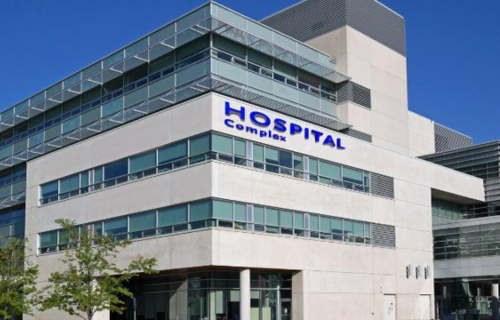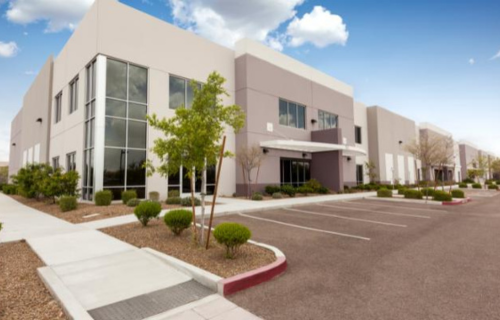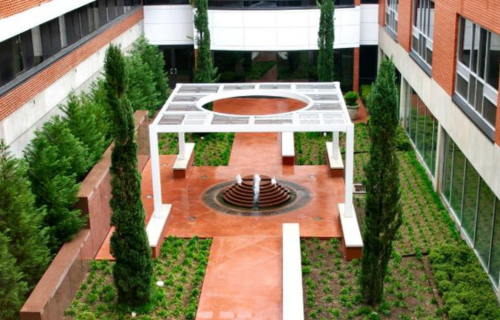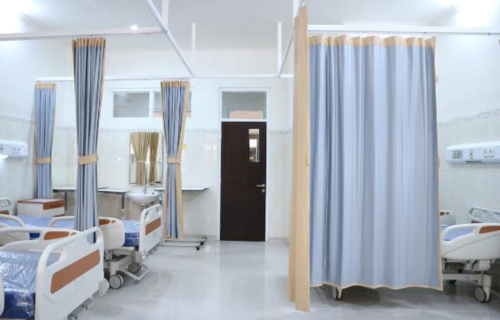When it comes to the construction industry, there are different sectors under this large umbrella of 'construction'. Each of the different sectors encompasses types of buildings that have different purposes, such as retail spaces/commercial buildings or residential buildings. Another of these, which we will be delving into in-depth for this article, is healthcare construction. Each kind of construction does have different objectives and design details, in addition to having different purposes.
Read on to learn more about what healthcare construction is, as well as some of the healthcare construction trends that we have seen emerging in recent years and gaining traction.
Healthcare construction is a specialized niche of the construction industry and generally pertains to the construction of healthcare facilities such as hospitals, clinics, medical office buildings, or outpatient facilities. Healthcare construction not only deals with interior and exterior building but with ground-up projects, too. There are plenty of concerns when working in healthcare construction. Besides the purpose and the function of the institution being built, there is also close attention being paid to the health and safety of the staff and patients of the healthcare facility. This is also a sector of construction that is very technology-driven.

Within healthcare construction, there are two separate sectors. These two sectors, or two types of buildings, are hospitals and clinics. Hospitals are classified as I Occupancy, meaning that they are classified as an institution. Construction companies must follow a specific set of standards when building Occupancy buildings. Clinics, on the other hand, are classified as being B Occupancy. B Occupancy buildings are classified as being businesses, rather than institutions. In healthcare construction, hospital construction is the more expensive out of these two kinds of construction.
There are a few factors that contribute to this. For one, there is a higher level of scrutiny on the work for hospitals and this requires more funds directed towards different health and safety measures. Hospitals are also built with more infrastructure than clinics. They are usually built out of denser and sturdy materials like steel or concrete. Hospitals also require more advanced electrical and mechanical equipment to function and provide patient care. All in all, the stakes are higher when it comes to hospital construction than clinic construction.

The healthcare construction industry is somewhat unique in that it has some special terminology that is not shared across all disciplines of construction. Below, we will go over a few of the most common terms that we see in healthcare construction so that you can better understand this industry.
ICRA – Infection Control Risk Assessment
First, the acronym ICRA stands for Infection Control Risk Assessment. It is used to assess the level of risk that is in a hospital clinic, or other healthcare space. This assessment takes a number of things into account when assessing the level of risk. The factors that are considered include the level of care at the location, the number of patients, and the requirements of the construction project, whatever that project may be. ICRA is used to reduce the risk of infection during projects in healthcare buildings or spaces and to keep workers safe. It helps maintain the well-being of everyone at the facility.
MOB – Medical Office Building
Next up is the acronym MOB. In the case of health care construction, this acronym stands for the phrase Medical Office Building. What does this mean or refer to, exactly? MOB is used to refer to any sort of medical office building that may end up being part of the construction project. An example of an MOB in this case is an office facility for medical practitioners. Diving deeper into this, they could be locations such as outpatient facilities, clinics, or primary care practitioners. This is not quite as specific of a term as ICRA or ILSM, the latter of which we will be going over next.
ILSM – Interim Life Safety Measures
ILSM is the last term in healthcare construction that we will be going over here. ILSM stands for Interim Life Safety Measures. So what does this mean, exactly? This refers to different health and safety measures in healthcare construction such as fire codes. It also refers to standards that should be met to ensure the safety of those in a hospital or MOB. They can be put in place in a few different situations. One such situation is when a system needs to be put out of service in an interior construction project. Another example is when there is a changed path through a ward.
Every industry has its trends, and the construction industry is no different. In fact, the trends seen in his industry can differ from the trends of other construction industries such as retail construction.
Read on for some of the big trends that we are seeing these days for healthcare construction, and that you can expect to continue to see beyond.
More Flexible Spaces
Flexibility of spaces is very important in all types of construction these days, including in hospitals or other health care spaces, like doctor’s offices. This can help facilities to mobilize and adapt in order to meet short-term needs. An example of a short-term need can be an influx of patients due to a pandemic or a natural disaster. Flexible spaces are also important due to the rate at which technology is advancing. There are many ways to create a healthcare space that is a flexible space. One of these is the acuity-adaptable patient room. An acuity-adaptable patient room is a hospital room that can come to the patient, rather than the patient being moved to where care is. They can help solve the issue of overcrowding in hospital spaces. Convertible and flexible hospital rooms are now becoming the standard across the healthcare industry, too, without compromising quality.
Focus on Sustainability Efforts
Next up is the focus on and heightened commitment to sustainability, which we see not only in the healthcare industry but in other areas of construction as well. Hospitals use up a lot of energy, just in their everyday functions. They are energy-intensive by nature. For instance, they have robust mechanical, plumbing, and electrical systems, and the equipment needed in a hospital uses a lot of energy, too. There are many ways that renewable energy sources and sustainability are being addressed, including optimizing indoor air quality and reducing potable water use. Passive design elements that reduce energy demands, and sourcing sustainable materials that are regional or local can help with this objective, too. Construction companies who are trying to cut down on the impact of their healthcare construction projects will also try to minimize construction waste.
Emphasis on Wellness
It makes sense that an emphasis on wellness would be a focus and emerging trend in the healthcare industry— an industry that helps to care for us and our mental and physical health. Healthcare construction tries to achieve this by making clinics or hospitals as comfortable as possible, which can then help make a positive impact on the health and wellness of patients. This emphasis on wellness is achieved by focusing on natural light, access to fresh air, and the acoustics quality of a space when designing and building it. It is also important to reduce any sensory stressors within the healthcare space being built. Access to natural light has largely become a code requirement in patients’ rooms, but natural light should be visible throughout the hospital space, including hallways or waiting areas. If a healthcare space is a larger campus or hospital, then designers may also opt for areas that can prove to be a respite for employees and patients, such as courtyards or open-air gardens.

Private Waiting Areas
Private waiting areas are another trend that we see emerging in healthcare construction. They are popular for a couple of reasons. For one, of course, they are private and can give patients or families more time to themselves, especially in difficult situations. This can be less stressful for them. Another benefit of this privacy is that those patients who have poor immune systems— especially those who have poor immune systems due to an illness or disease they are dealing with— are less likely to get sick and are not interacting with many other ill individuals. In this vein, private waiting areas also reduce the spread of illnesses by being a way to social distance, even if you are not already sick. Private waiting areas emerged as a trend or design feature.
Micro Hospitals
A micro-hospital is also a trend that we are seeing in the healthcare construction space. What is a micro-hospital, though, you may wonder? These are small, typically outpost-style, spaces that are used to provide health care even in more rural areas. During the pandemic, of course, we learned firsthand the importance of access to adequate health care in all places. Of course, this was never an issue that was up for debate! When a micro-hospital is built, this is usually done using pre-fabricated materials or modular construction— the buildings are built offsite in controlled environments and transported to the site after they are completed. Micro hospitals do not have a large number of beds, and these typically only number between 8 and 15. This is because patients are only meant to be admitted to micro-hospitals for short amounts of time. That being said, this type of healthcare space can be incredibly useful in a pinch or in areas where the population is low.

Automation
Automation is another one of the trends that are all over the construction industry, the healthcare construction industry included! It is also seen in many other industries these days, as it is important for industries to adapt to the technological advantages we are seeing, or else they will become obsolete. So, how does the rise in automation help the healthcare construction industry? Some of these healthcare spaces use machines or robots that can automate certain tasks around the hospital or doctor’s office. For instance, automation can be used to automate the frequent sanitation of door handles, faucets, and other surfaces. These surfaces are required to be cleaned often in healthcare spaces to reduce germs and the spread of disease. Of course, automation can also be used in the construction of the healthcare building itself. Automation is often used in construction these days, especially when the construction method is pre-fab or modular building.
Smart Lighting
Last, but certainly not least, we have the trend of smart lighting. Smart lighting can be seen being used in many spaces, such as residential spaces. Of course, it is also used in healthcare spaces like hospitals and medical office buildings. When we think of hospitals— or when we used to, at least— we think of the harsh bright lights of the past. Luckily, healthcare spaces are getting rid of these clinical harsh lights. Instead, more construction companies are placing soft and indirect light, instead, because it increases the comfort of patients. Smart lighting that is dimmable and has several light sources is now popular in these kinds of spaces as well. This may require a more in-depth construction strategy when doing electrical work in such healthcare locations. UV lights that can maintain and monitor cleanliness in the hospital are on the rise, too. UV light is able to kill the bacteria in the space and reduce the spread of illnesses.
As we navigate these pivotal design principles, it becomes evident that the arena of hospital design is in constant evolution. These elements, while universal, take on a unique significance within different cultural and regional contexts. Saudi Arabia, with its strategic vision and substantial investments in healthcare, stands at the cusp of a transformative era in hospital design and construction. For those looking to delve deeper and align with the future of healthcare infrastructure, our "Saudi Hospital Design & Build Expo" serves as the definitive gateway to tap into the Kingdom's boundless opportunities.
Source: Seko Construction
Subscribe to Saudi Hospital Design & Build Expo newsletters to get informed on all events news and updates.